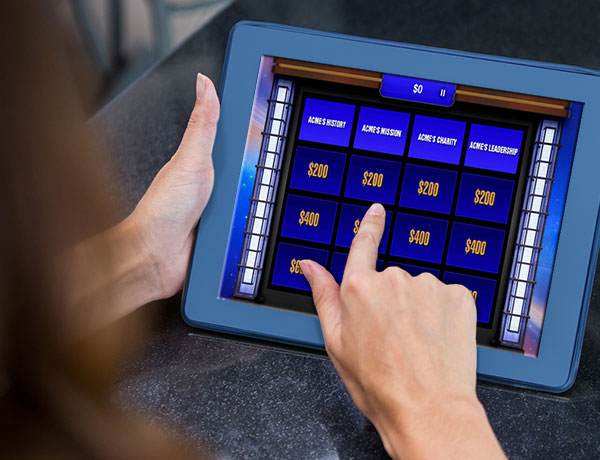Making mistakes can be painful. They are less painful, however, when they’re made in a “safe space.” Training games provide that safe place, we refer to it as a “practice playground.”
When I worked in retail, I learned how to deal with customers mostly by experiencing first-hand how not to deal with customers. Say the wrong thing to an angry shopper and, let me tell you, you remember real quick not to say that again. There’s no better “trial by fire” than being chewed out by a customer for something you didn’t do and have no control over.
The problem is, that experience is awful. It’s so impactful in a training sense because it’s traumatic. And trauma and training are words that shouldn’t go together.
Sure, I had training videos my first week that told me how to deal with irate shoppers, but that passive style of training didn’t engage me. I sat in a backroom, by myself, and watched non-interactive videos without any supervision or guidance.
It wasn’t exactly a stimulating environment. As trainers, how do you engage learners and teach critical conflict resolution and soft skills without throwing them in the deep end and experiencing trauma? You can build a training game.
Play through this short scenario game where you’re a hotel clerk trying to help a tired traveler check into their room. Sounds easy enough, right?

Soft Skills and Retail
Customers are more digital, more informed, and more demanding than ever. They want customer service and products on their terms and have multiple channels to air their grievances should things not go their way. We are living in an “anger-filled” age according to a recent article in The New York Times. Customers, these days, can’t handle even the smallest disappointment.
That’s a lot of pressure on a retail worker.
Especially considering many retail spaces are entry-level jobs for young workers who may not have the necessary soft skills or emotional maturity themselves to deal with ever-demanding shoppers.
Training these soft skills into employees is critical to ensure they can meet customer expectations, provide a better customer experience, and, if needed, de-escalate a tense situation.
This youngest generation of workers and learners, however, were born in the digital age and grew up with technology. In particular, video games. To use games and simulations for training purposes is not only accepted by younger generations, it is preferred and embraced.

Learning through Games
Training with games can help make you a training hero. Games improve employee engagement and increase knowledge retention. They provide safe spaces to fail and most importantly, they’re fun!
Perhaps the best type of game for this type of training is a branching path game.
Branching path games provide alternate routes or paths for your learners to take. Did they say the right thing to a customer? Great! They’ll get points and move down the “happy customer path” and experience what happens.
On the other hand, learners can also experience the “unhappy customer path” like the ones I took first-hand as a retail worker. You still might be chewed out like I was, but it’s happening virtually and not quite as traumatic.
With soft-skills training – particularly in a retail setting – games provide perhaps the best tool when learning these skills, a safe space to fail.

A Safe Space to Fail
The old adage that we started with is all too true, we learn best from our mistakes. Mistakes however are usually painful, embarrassing, and simply something most people don’t want to experience.
Using games and simulations, learners can make those mistakes without all the nasty consequences and learn and grow.
In a recent study, we discovered that 57% of learners played training games in The Training Arcade three or more times. Learners come back to play the game over and over to increase their score and climb the leaderboard. How often do your employees go back to that PowerPoint, Training Manual, or video?
With branching path games, this ability to go back and re-engage with the material is crucial. Maybe your learner aced that scenario on customer interaction and now you want them to go down the “angry customer path”.

Be a Soft Skill Training Hero
Engaging your learners with games and scenarios puts them in real-life simulations while allowing them to explore different paths to success and failure. With a little planning and thought, you can motivate, engage, and prepare your learners for their work.
Using branching path games for soft-skills training provides:
- A safe space for learners to fail
- Improved engagement and knowledge retention with training materials
- Actionable data to you as a trainer
For more information or to schedule a walk-through of our game-building software, get in touch with a member of our team and start your journey to becoming a training hero today.


